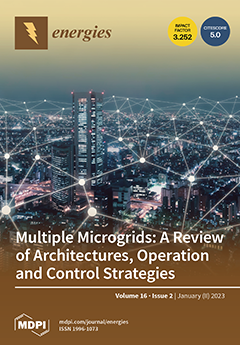Open AccessArticle
Ensuring the Reliability of Gas Supply Systems by Optimizing the Overhaul Planning
by
Volodymyr Grudz, Yaroslav Grudz, Ivan Pavlenko, Oleksandr Liaposhchenko, Marek Ochowiak, Vasyl Pidluskiy, Oleksandr Portechyn, Mykola Iakymiv, Sylwia Włodarczak, Andżelika Krupińska, Magdalena Matuszak and Krystian Czernek
Viewed by 1277
Abstract
The aim of the article is the development of methods for optimal overhaul planning of compressor station equipment. Nowadays, due to uncertainties in the forecast of gas supply flow rates, increasing the reliability and energy efficiency of main gas pipelines is an urgent
[...] Read more.
The aim of the article is the development of methods for optimal overhaul planning of compressor station equipment. Nowadays, due to uncertainties in the forecast of gas supply flow rates, increasing the reliability and energy efficiency of main gas pipelines is an urgent problem. The dependence of operating costs for major repairs on the maintenance periodicity is extreme. Reducing equipment’s maintenance period leads to an increase in repair costs. It also increases the reliability of equipment operation. Overall, all these facts reduce the probability of emergency failures and related expenses for emergency recovery, gas losses, and undersupply to consumers. Therefore, an optimal maintenance frequency exists, at which the total operating costs will be minimal. A procedure for optimizing the periodicity of repairs and equipment replacement is proposed. It was realized by constructing an objective function as a dependence of exploitation costs on the inter-repair period of major repairs. A probabilistic approach was applied to assess the aging process. The characteristics of the equipment’s state are described by distribution densities (i.e., pre-repair, inter-repair, and full-service life), which vary depending on product initialization time. The main characteristics of major repairs are their duration and intensity, which are evaluated by the quality factor related to repair costs. The extremum of the objective function is sought by the method of competing options. It was determined that the optimal management of the frequency of equipment replacement can be realized by choosing the optimal values of the average service life, average operation time of units until the first planned and preventive repair, and quality factor. As a result, the required technical condition for the technological equipment is ensured under minimum operating costs without reducing the system’s reliability.
Full article
►▼
Show Figures





